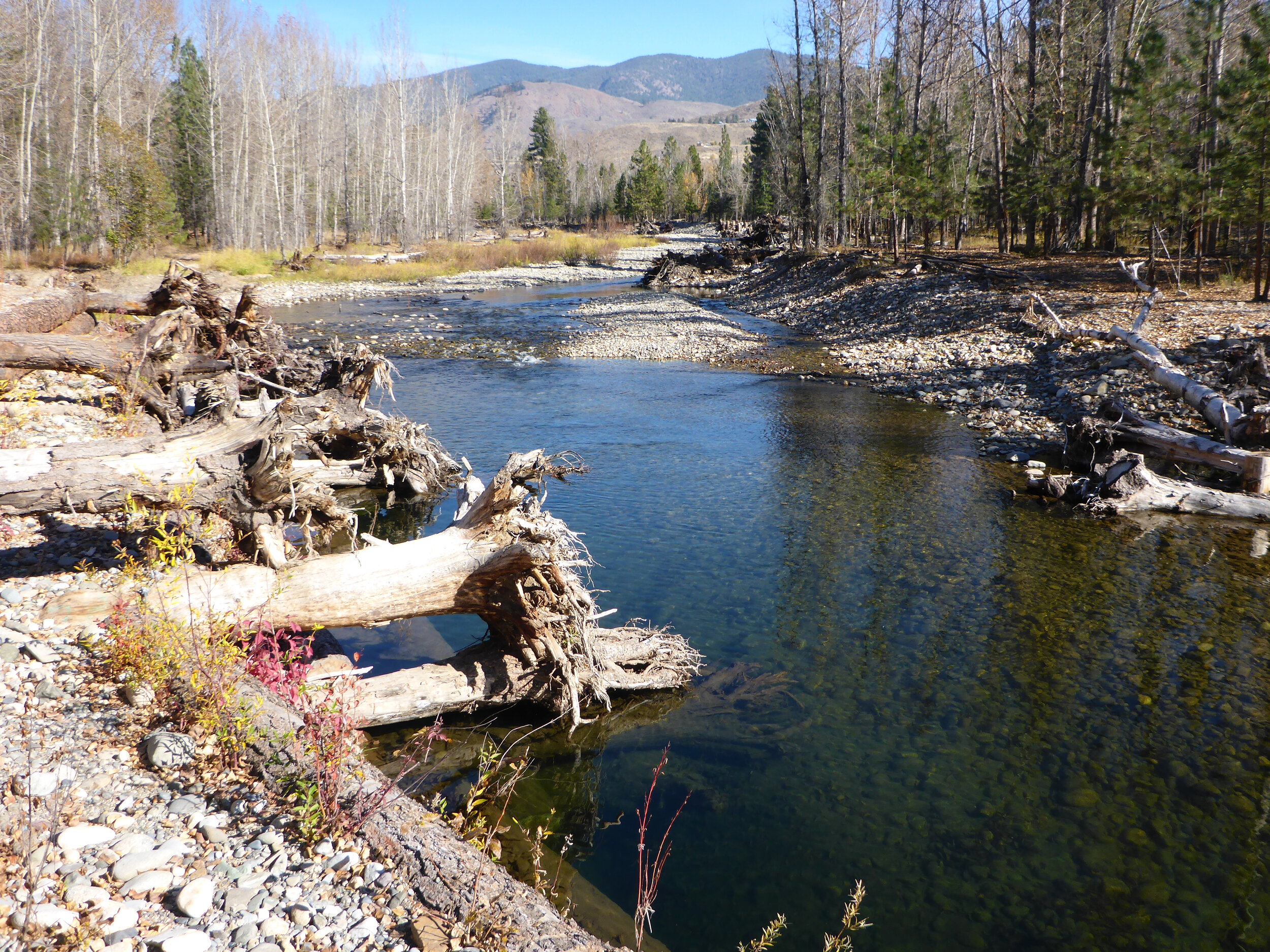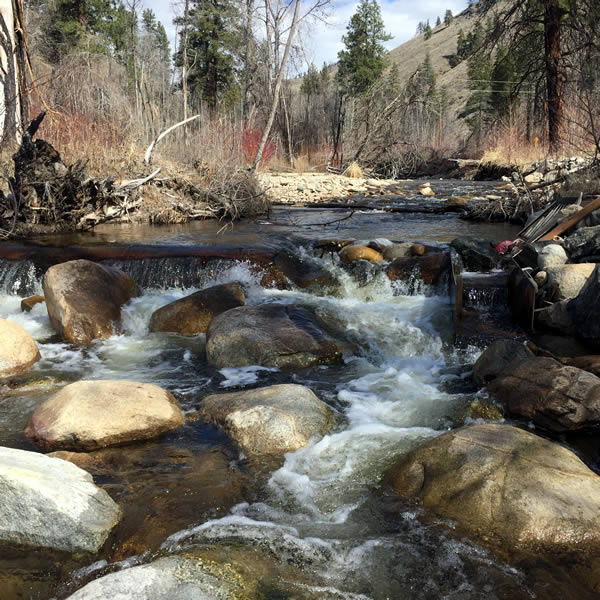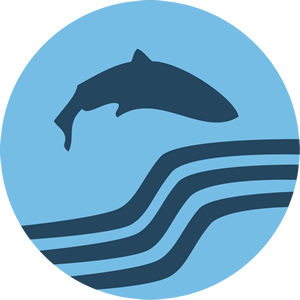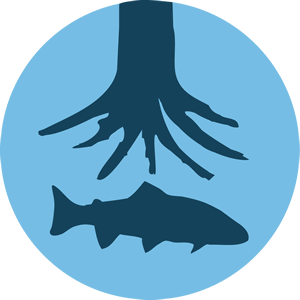Whitefish Island Project – Reconnecting a Side Channel
Side channel habitat in the middle Methow (Between Twisp and Winthrop) is scarce. The side channel at Whitefish Island is one of only a handful of remaining side channels that connect annually within this reach. And, although the channel did connect each year, the channel would become disconnected from the main river for 8 to 9 months of the year. Fish that entered the side channel in the spring would become trapped in isolated pools as water levels dropped in July and August. In 2012 Methow Salmon initiated a project to restore year-round flow connection and reduce salmonid stranding.
Engineered Log Jams
The engineered log crib at Whitefish Island side channel provides habitat complexity and bank stabilization for the highway.
Log jams often accumulate at the upstream end of islands. These natural jams help split the flow of water to either side of the island. Our project constructed an engineered log jam at the top of Whitefish Island to increase water flow into the side channel during low flow. A series of wood structures were constructed along the length of the side channel to improve pool habitat. Before the project, large angular rip-rap protected Highway 20 from continued erosion during high water events. This project increased the distance between the channel and the highway and replaced the rip rap armor with a large wood crib structure to provide a more natural bank line that would also increase fish habitat. The wood structure was built in a tiered stair step with each step heavily planted with willows and alders to help provide shade and long-term bank stabilization.
Small Action Equals Big Benefit
Fish monitoring by Reclamation and the USGS indicate that the site is supporting a significantly higher population of salmonids than pre-project. The data further suggests that fish condition and population may be correlated with side channel connectivity. Channel connection projects like this may need small adjustments to get the flow connection dialed. While the side channel was perennial through the first winter, several small actions were needed to re-balance sediment deposits to maintain flows between 2013 and 2016. In 2019 Methow Salmon revisited the project site during low water to focus the river’s energy at the inlet area and three of the side channel wood structures to better convey sediment during high flows through the side channel. As with all of our projects, we will be monitoring the improvement from these small actions to ensure that we get it right.
“If you are a fish coming to the Methow today, you’ve got a lot more places to go. ”









